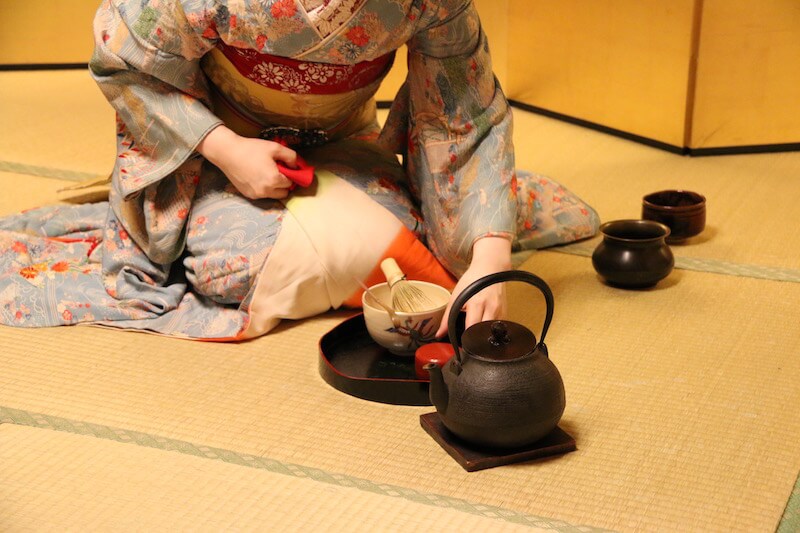
The performance of Chanoya, Chado or Sado, or the way of tea, is considered an important cultural artform in Japan. There’s no dunking your cookie in your cuppa here!
There are teahouses specialising in tea ceremony, in various forms all over Japan. The most formal can last for hours but for those visiting Japan and short on time there are brief demonstrations available – some just half an hour.
You as a guest would sit watching quietly and respectfully as the server carefully prepares the tea in a most hypnotising way. Whisking briskly but lightly in a slight figure 8.
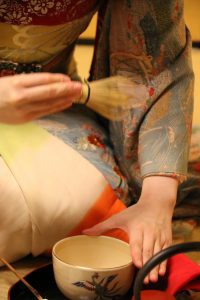
You eat a type of traditional sweet called Wagashi before you drink the tea. The sweet prepares your mouth for the slightly bitter Matcha (powdered high grade green tea ). In Buddhism, where tea ceremony has its roots, they say that ‘in life – without the bitter you cannot appreciate the sweet and vice versa’. Well not in those exact words but you get my drift…. The ceremony provides this wonderfully subtle reminder for the everyday.
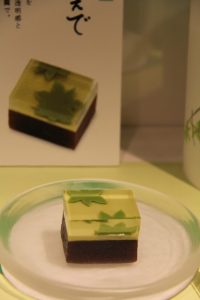
Japanese wagashi comes in many forms and are often seasonal regarding colours, patterns and flavours. They can be as simple as a slice of yokan (red bean jelly) or as intricate and beautiful as a blooming Camellia moulded from coloured, sweetened white bean paste, or as delicate as pressed wasanbon sugar.
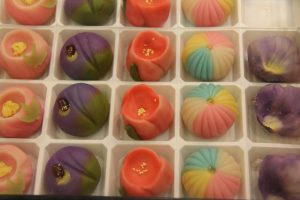
Once you have finished your sweet some freshly whisked matcha is served in a tea bowl. You take the bowl in both hands, turning the ‘face’ or decorative/interesting side away from you for the other guests to enjoy as they wait their turn to drink. You must finish the tea in 3 sips – with a sharp slurp on the last one to ensure no tea is left in the bowl.
The bowl is then returned to the server before the next person is served tea. Traditionally the same tea bowl is used for each person in the group, after being cleaned, but in shorter ceremonies people may be served their tea in individual bowls which speeds up proceedings a little.
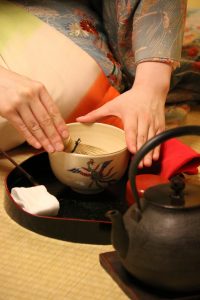
Of course this is an extremely simplified explanation – but if you’ve found this interesting I urge you to find out more for yourself and of course I highly recommend seeking out a venue to experience Tea Ceremony on your Japanese travels (or in a Japanese cultural centre in your own country).
If you are a Washoku lover you will inevitably appreciate this special Japanese celebration of tea, and so much more…. Did you know the Samurai used to attend tea ceremony as a counterbalance to the atrocities of battle?
You can try your hand at whisking your own matcha at home of course – but hot tip from me – if you buy some matcha in Japan to take back to your own country – please note that it is best used within one month of grinding – that’s when it has the most flavour! Don’t tell anyone but I pop mine in the freezer to keep it a little longer! You can buy matcha at certain Japanese grocery stores outside of Japan too but check the date on it as sometimes it has been sitting on the shelf for a while…
If you are interested in joining me in Japan on one of my Zenbu Cuisine and Culture Tours please hop over to my site to keep up with the latest tour dates and itineraries.
All photos and opinions expressed are property of Jane Lawson.